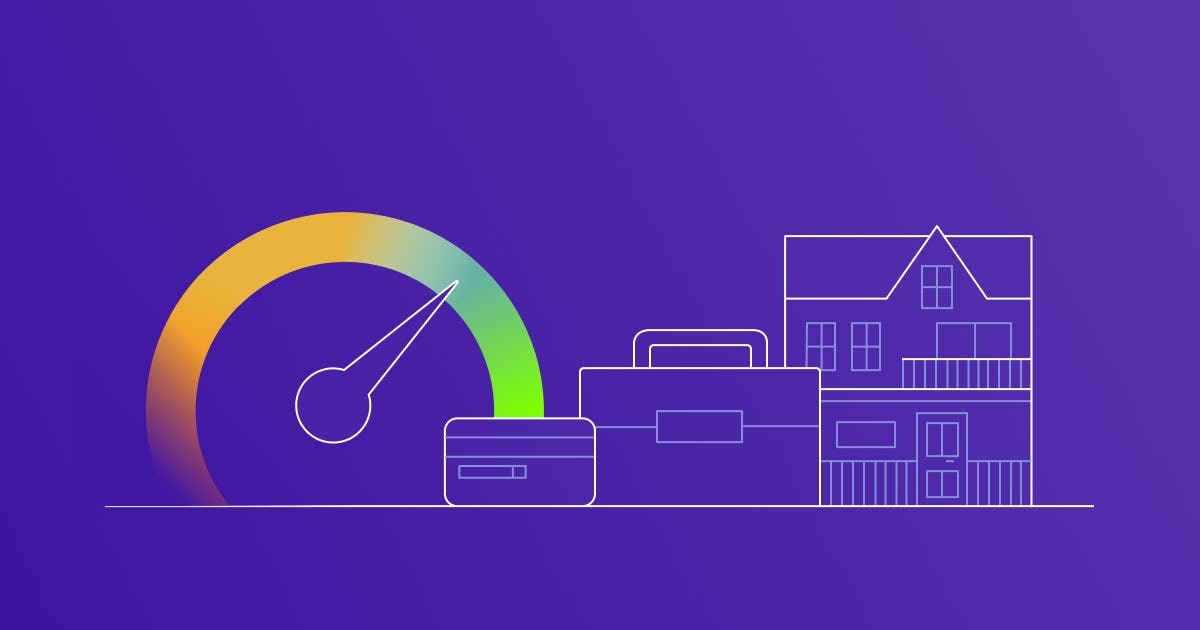Credit and debt, while related, are not the same thing. Credit is your ability to take on debt, while debt is a loan or the amount you owe creditors. Having good credit is key to getting good rates when you need to borrow money, which can help your bottom line. But understanding what you can do to impact your credit and how debt can impact you may help you the most in the long run.
Your credit score
When you apply for any type of loan – credit card, home equity line of credit, student loan, mortgage – the lender looks at your credit to determine how likely you are to pay it back. Your credit score is how they evaluate this.
The most widely used score is the FICO® Score. Unlike a credit report, which is simply a record of your loans, balances, and payment history, your credit score is a number generated after evaluating five factors in your credit report. FICO doesn’t provide all the details on how they calculate your credit score but do offer a breakdown of what they consider and how they weight each area.
Source: FICO
The role of credit bureaus in your credit
There are three major credit bureaus that house your credit data – Equifax, Experian, and TransUnion. Lenders look to the bureaus for information on how you handle your loans before lending you money, and they provide them information on how you handle the loan they gave you. The lenders can choose to report to any, all, or none of the bureaus, which is why your credit report and scores often vary slightly between the three.
Credit accounts, or the types of debt you can take on
Revolving is often the most common type of credit account people have. It is a type of credit line that people can borrow from freely up to a cap, i.e. credit limit. Most often, only minimum payments are required each month and balances can be carried over from month to month. If you pay the entire balance at the end of the month, no interest is charged. Credit cards are a type of revolving credit accounts.
Installment loans are for a set amount of money, which is provided all at once. It has a predetermined end date and monthly installment payments. You can not borrow more money from an installment loan. Mortgages, student loans, auto loans, and personal loans are all types of installment loans.
An open credit account or charge card is the least common account type. Charge card accounts allow borrowers to use as much credit as needed. They often don’t have credit limits, but the entire balance must be paid at the end of the month.
Loans can be unsecured or secured with collateral, like your home or car. The benefit of a secured loan is lower interest rates or in the case of bad credit, the ability to get a loan. The drawback, however, is if you are unable to repay your loan, you could lose your collateral.
Similarly, loans can have a fixed or variable rate.
Generally, a mix of credit accounts is better for your credit score, but paying your accounts on time and not using all the credit you have available, i.e., credit utilization is more important to keep your score high.
The better your credit, the better your options
FICO scores range from 300 to 850. Generally, anything over 740 is considered very good and will get the best rates and terms from lenders.
Source: Experian
Now that you know more about credit, do you know what your score is?
These days, accessing your credit score is quite easy. You can go straight to myFICO and get full access to your credit reports and scores from the three credit bureaus, but you will have to pay. Many credit cards offer access to your credit score as a free service to their customers, and there are a number of websites and apps, such as Credit Sesame and Credit Karma, that allow you to check both your credit report and score for free.
How do you improve a credit score?
Achieving and maintaining a good credit score takes time, effort and a little know-how. Here are some key things you can do to help raise and maintain a good credit score.
Get and stay current on your payments
Keep balances low on credit cards and other revolving credit
Don’t close unused credit cards, even if you’ve consolidated and aren’t using the cards anymore
Don’t open new cards you don’t need
If you’re rate shopping for a loan, submit your applications in the same time period.
Find a complete list of tips at myFICO.
Using your credit to get a loan
Homes, cars, college, and projects – loans are available to get the things you want and need when you don’t want to tap into savings or you just can’t afford them. However, just because you qualify for a loan doesn’t mean you should get one. There is such a thing as good debt and bad debt, and you should carefully consider your situation before borrowing money.
What makes “good” debt?
We consider good debt to be more like an investment. If the loan will help you earn more money or purchase something that appreciates in value, it’s good debt. Mortgages, student loans, and even some loans used for home improvement can be considered “good” debt.
If you’ve put the work in to raise and keep a good credit score, you’re in a great position to get a loan when you need it. Lenders want to work with you and will give you the best deal.
Things to remember about credit and debt
Credit is never the same as cash.
Debt can happen to anyone. Anyone.
Yes, you can have too many credit cards.
Closing credit cards can actually hurt your credit.
Not all debt is created equal.
